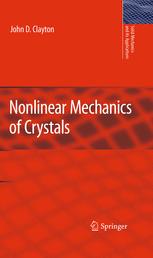

Most ebook files are in PDF format, so you can easily read them using various software such as Foxit Reader or directly on the Google Chrome browser.
Some ebook files are released by publishers in other formats such as .awz, .mobi, .epub, .fb2, etc. You may need to install specific software to read these formats on mobile/PC, such as Calibre.
Please read the tutorial at this link: https://ebookbell.com/faq
We offer FREE conversion to the popular formats you request; however, this may take some time. Therefore, right after payment, please email us, and we will try to provide the service as quickly as possible.
For some exceptional file formats or broken links (if any), please refrain from opening any disputes. Instead, email us first, and we will try to assist within a maximum of 6 hours.
EbookBell Team

4.8
64 reviewsThis book describes behavior of crystalline solids primarily via methods of modern continuum mechanics. Emphasis is given to geometrically nonlinear descriptions, i.e., finite deformations.
Primary topics include anisotropic crystal elasticity, plasticity, and methods for representing effects of defects in the solid on the material's mechanical response. Defects include crystal dislocations, point defects, twins, voids or pores, and micro-cracks. Thermoelastic, dielectric, and piezoelectric behaviors are addressed. Traditional and higher-order gradient theories of mechanical behavior of crystalline solids are discussed. Differential-geometric representations of kinematics of finite deformations and lattice defect distributions are presented. Multi-scale modeling concepts are described in the context of elastic and plastic material behavior. Representative substances towards which modeling techniques may be applied are single- and poly- crystalline metals and alloys, ceramics, and minerals.
This book is intended for use by scientists and engineers involved in advanced constitutive modeling of nonlinear mechanical behavior of solid crystalline materials. Knowledge of fundamentals of continuum mechanics and tensor calculus is a prerequisite for accessing much of the text. This book could be used as supplemental material for graduate courses on continuum mechanics, elasticity, plasticity, micromechanics, or dislocation mechanics, for students in various disciplines of engineering, materials science, applied mathematics, and condensed matter physics.